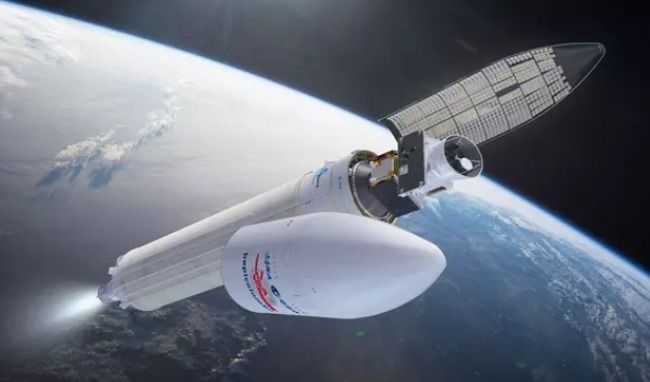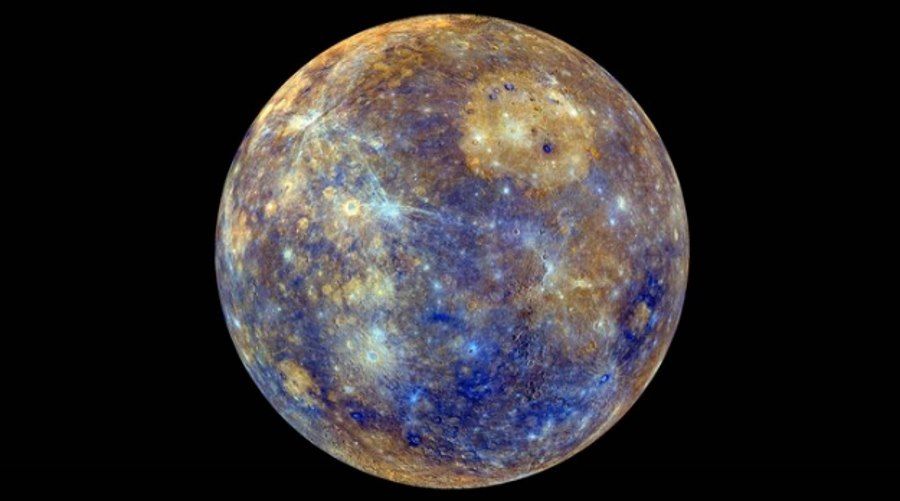BepiColombo is flying to Mercury
On the night of October 19-20, the BepiColombo mission will take off from French Guiana, targeting the smallest and closest planet to the Sun in the solar system – Mercury. This mission is jointly carried out by ESA and JAXA and is the third mission to this planet.
Everything is already buttoned up. Experts in space operations, flight dynamics, ground stations and system in the software, along with representatives of the in science and management, are looking forward to the launch, which ill take place on October 20 in the early morning, at exactly 3:45 a.m. BepiColombo will launch from a spaceport in French Guiana. A mission consisting of two hich orbiter ill be launched into space on top of an Ariane 5 rocket.
The planet Mercury, although known to humanity for some time in ancient times, is one of the least studied planets in the Solar System. And that’s what’s going to change A joint mission between the European Space Agency (ESA) and the Japanese Space Agency (JAXA).
Podr The journey to Mercury is expected to take more than seven years. BepiColombo will have a rather complicated flight path. Not surprisingly. Probe, which If Mercury fails to enter the planet’s weak gravitational field, it will inevitably end up incinerated by the Sun.
Using several gravity assists, BepiColombo will enter Mercury’s orbit in late 2025. Its flight includes a close flyby near Earth, two close flybys near Venus, and six flybys ok The probe is expected to make a close encounter with Mercury before eventually entering its orbit.
BepiColombo will not only unlock the secrets of the smallest planet in our system, but will also shed light on how the Solar System formed. – If we want to understand our planet Earth and how life originated on it, we need to understand our solar system, said Joe Zender, associate designer of BepiColombo.
Mercury holds a few secrets for us. Scientist for years, the planet’s surprisingly high density. Mercury also has its own magnetic field, the only other rocky planet in our Solar System. In addition to the magnetosphere, the probe will also study the planet’s trace atmosphere.
Humanity has visited Mercury twice so far with the Mariner 10 and MESSENGER spacecraft. The goal of the first of the missions, which ra was launched by NASA in 1973, was to perform studies of the atmosphere, surface and physical characteristics of Mercury and Venus. BepiColombo is named after one of the scientists from the currently working on the Mariner 10 mission – Professor Giuseppe “Bepi” Colombo. It is to him that we owe the gravity assist maneuver. Mariner 10 has mapped less than half the planet’s surface and confirmed the existence of a trace atmosphere on the planet.
The second mission to Mercury – MESSENGER – was sent only after 33 years and was also carried out by NASA. It was launched in 2004. The purpose of the probe was to study the chemical properties of the planet, its geology, the nature of its magnetic field and its exosphere. The mission ended in 2015 with a controlled impact on Mercury’s surface.
The BepiColombo mission is the third mission to Mercury, and the first that that NASA does not carry out. It has so far cost 1.6 billion euros. It consists of two ch orbiter in, kt The separation of which will already have occurred in Mercury’s orbit. One built by ESA – Mercury Planetary Orbiter (MPO), the other by JAXA – Mercury Magnetospheric Orbiter (MMO). The former is expected to study the planet and the latter the magnetosphere. Each of them contains a whole set of instruments in scientific.
The main module of the The Japanese orbiter will rotate around. transfer module – Mercury Transfer Module (MTM), for which The lander, which is the responsibility of ESA, is a fundamental part of the spacecraft, which Both orbiters will be attached for the duration of the flight. Due to budget constraints, the lander was abandoned The Russians were supposed to build.
Sw j Polish scientists also participate in the mission. In the works on one of the In the subsystem of the MERTIS (MErcury Radiometer and Thermal infrared Imaging Spectrometer), which ry will be used to create a mineralogi map of the surface, scientists from the Space Research Centre of Polish Academy of Sciences were involved. Our scientists have been working on a system that determines the direction of measurement. It depends on its setup on what „looks at” spectrometer.

The mission will study the structure, topography and geology of Mercury. It explores the r It will also study the dynamics and composition of the exosphere and analyze the structure and dynamics of the planet’s magnetic field. Mapping of the surface will also be completed. The orbiters will also search for water ice, about which as reported by MESSENGER probe. But where l d on Mercury? So close to the Sun? Ot The low intensity of Mercury’s rotation axis means that sunlight never reaches the inside of the impact craters in the impact crater, which hich are located at the poles of the planet.
This is a unique mission. Mercury’s environment is extreme. The Japanese orbiter will rotate around The European machine will be wrapped in a special multilayer blanket and fitted with a heater in case of freezing.
– There are really serious temperatures there. Nearly 450 st. Celsius on one side, and minus 180 degrees on the other. C. Our spacecraft will travel between these regions within a few tens of minutes and all instruments must work – said Suzanne Imber of the University of Leicester, who is working on the BepiColombo mission. Imber worked r also for the Mariner 10 mission.
The mission is expected to take two years from the time it arrives. Although, as with many missions, its duration may be extended depending on the technical condition of the equipment . Upon completion, the orbiters will be smashed against the planet’s surface.
Mercury is the smallest and closest planet to our star in the solar system. It has a vestigial atmosphere and its surface with numerous impact craters resembles our Moon. The planet has no natural satellites . It has been known since ancient times and can be seen with the naked eye, but because of its proximity to the Sun, Mercury can only be seen from Earth just before sunrise or just after sunset.
